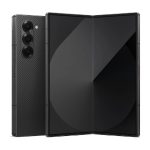
A second leak (Zhihu via Videocardz) has lent some serious evidence to the growing rumble indicating Intel is planning to introduce the big.LITTLE philosophy in its mainstream segments going into 2021. A shift like this would introduce a new variable for performance measurements of processors similar to the one introduced by AMD with its MCM philosophy (although MCM was a much more performance-oriented shift while this is an efficiency-oriented improvement).
Intel Alder Lake CPUs will feature ‘hybrid technology’ with big and small design
The leak is from Intel documentation detailing “Intel Hybrid Technology” which is essentially the packaging of big cores along with small cores. The big and small cores will have the same instruction sets and model-specific registers but will have different computational powers and overheads. You are likely looking at big cores that have higher throughput and higher clock speeds and small cores which are very power efficient. That said, Intel has limited some instruction sets to work only on the big cores which include AVX512, Intel TSX and FP16 support.
This also somewhat refutes the rumor that was recently posted about Intel abandoning AVX512 since it seems to be supported into Alder Lake. While this change might not have too big an impact for the mainstream desktop segment, it could have huge implications for data centers and mobile devices – or any scenario where the computational load fluctuates wildly. The small cores will also allow Intel to offer massively improved battery life to laptop models without degrading high-performance computing. This move will also turn up the heat on competing ARM designs as the “small” cores will be able to match ARM in terms of power efficiency at low loads while the big cores will outgun them in raw power.
Recap: Intel’s Alder Lake CPUs based on 10++ process will feature 8 big and 8 little cores on the LGA 1700 socket
A very interesting post about Intel’s upcoming 10nm-based Alder Lake processors was posted on Chinese PC shopping forums recently. This post was very surprising because not only is Alder Lake quite far out on the horizon (It will be preceded by Rocket Lake which should succeed Comet Lake), it showcases the introduction of a philosophy that has been wildly successful in smartphones: big.LITTLE.
While this particular leak is dedicated to desktop processors, if this technology is introduced in Alder Lake then you can be sure it will trickle down to the notebook parts as well – and it is there which should be able to add some serious value. The big.LITTLE philosophy (invented by ARM) allows processor manufacturers to selectively choose a high performance or a low energy cluster depending on need and demand. While it won’t make a lot of difference in a desktop environment, it makes a huge impact in mobility applications where TDP envelopes are usually constrained and power quite restricted. Before we go any further, here is a screenshot of the relevant slide:
The three types shown here range from an 8+8+1 configuration (8 big, high powered cores; 8 little, low power cores; and 1 integrated GPU) to a standard 6+1 configuration (only 6 “big” cores with an integrated GPU). The notes also state that Intel is investigating with a 150W design. While it is unclear why Intel is worried about power envelopes in a desktop environment we can expect that the company will allow the big cores to clock fairly high. It will also be interesting to see whether all 16 cores can work in tandem (or only 8 at a time as is usually the case). Judging from the fact that both the 8+8+1 and 6+1 SKUs have the same TDP, however, it likely won’t be possible for all cores to operate in tandem.
Another piece of information that this leak reveals is that Alder Lake will utilize the LGA 1700 socket. Since Comet Lake has already shifted users to LGA 1200, it seems as if the stay on the new socket won’t be long (and that Intel won’t be following in AMD’s lead anytime soon as far as sockets go). If you keep in mind Intel’s statements at the Morgan Stanley TMT conference, we also know that Intel plans on aggressively pushing 7nm around the same timeframe Alder Lake is supposed to go live – which might mean that ADL-S is relegated to an experimental platform.
Intel will be facing stiff competition form a fully mature AMD in 2021 and we will likely be seeing some serious price wars happening as both companies defend their market share. While Intel has a larger margin buffer, AMD’s 7nm financial profile is stronger. That said, Intel has historically been able to achieve higher clocks and it remains to be seen whether this is a trend that will hold going into 10nm (roughly equivalent to TSMC’s 7nm).
The post Intel’s Alder Lake Platform Will Introduce Big And Small Cores For x86 Desktop Market by Usman Pirzada appeared first on Wccftech.
Powered by WPeMatico









